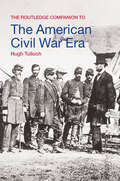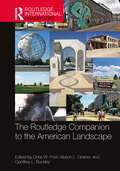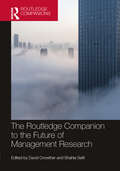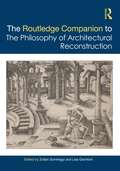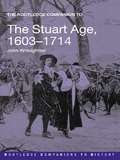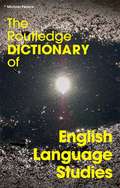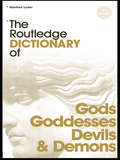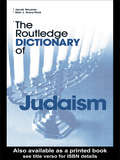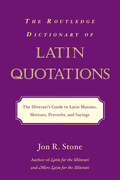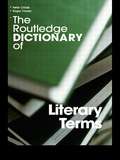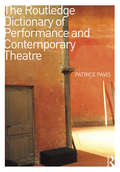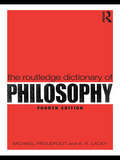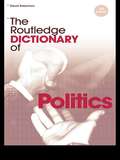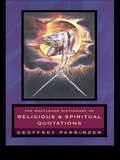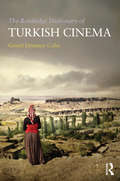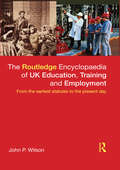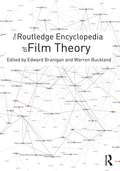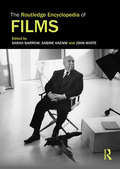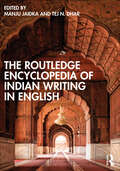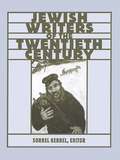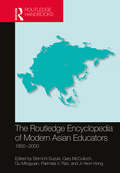- Table View
- List View
The Routledge Companion to the American Civil War Era (Routledge Companions to History)
by Hugh TullochArguably one of the most significant periods in US history, the American Civil War era continues to fascinate. In this essential reference guide to the period, Hugh Tulloch examines the war itself, alongside the political, constitutional, social, economic, literary and religious developments and trends that informed and were formed by the turbulent events that took place during America’s nineteenth century. Key themes examined here are: emancipation and the quest for racial justice abolitionism and debates regarding freedom versus slavery the confederacy and reconstruction civil war military strategy industry and agriculture Presidential elections and party politics cultural and intellectual developments. Including a compendium of information through timelines, chronologies, bibliographies and guides to sources as well, students of American history and the civil war will want a copy of this by their side.
The Routledge Companion to the American Landscape
by Chris W. PostThe Routledge Companion to the American Landscape provides a comprehensive overview of the American landscape in a way fit for the twenty-first century, not only in its topical and regional scope but also in its methodological and disciplinary diversity. Critically surveying the contemporary scholarship on the American landscape, this companion brings together scholars from the social sciences and humanities who focus their work on understanding the polyphonic evolution of the United States’ landscape. It simultaneously assesses the development of the US landscape as well as the scholarly thought that has driven innovation and continued research about that landscape. Four broad sections focus on key areas of scholarship: environmental landscapes, social, cultural, and popular identities in the landscape, political landscapes, and urban/economic landscapes. A special essay, "American Landscapes Under Siege" and accompanying short case studies call attention to the legacies and realities of race in the American landscape, bridging the discussion of social and political landscapes. This companion offers an invaluable and up-to-date guide for scholars and graduate students to current thinking across the range of disciplines which converge in the study of place, including Geography, Cultural Studies, and History as well as the interdisciplinary fields of American Studies, Environmental Studies, and Planning.
The Routledge Companion to the American Landscape (Routledge International Handbooks)
by Alyson L. Greiner Chris W. Post Geoffrey L. BuckleyThe Routledge Companion to the American Landscape provides a comprehensive overview of the American landscape in a way fit for the twenty-first century, not only in its topical and regional scope but also in its methodological and disciplinary diversity.Critically surveying the contemporary scholarship on the American landscape, this companion brings together scholars from the social sciences and humanities who focus their work on understanding the polyphonic evolution of the United States’ landscape. It simultaneously assesses the development of the US landscape as well as the scholarly thought that has driven innovation and continued research about that landscape. Four broad sections focus on key areas of scholarship: environmental landscapes, social, cultural, and popular identities in the landscape, political landscapes, and urban/economic landscapes. A special essay, "American Landscapes Under Siege" and accompanying short case studies call attention to the legacies and realities of race in the American landscape, bridging the discussion of social and political landscapes.This companion offers an invaluable and up-to-date guide for scholars and graduate students to current thinking across the range of disciplines which converge in the study of place, including Geography, Cultural Studies, and History as well as the interdisciplinary fields of American Studies, Environmental Studies, and Planning.
The Routledge Companion to the Future of Management Research (ISSN)
by David Crowther Shahla SeifiThe management of organisations continues to evolve as new priorities emerge and new approaches are developed. Thus, it is clear that research into business and management will also continue to evolve. This will be in terms of both what is researched and in terms of the techniques and methods used to conduct research. Such development will continue into the future and this book highlights evolving areas. It also suggests new topics which are emerging and new techniques to conduct such research – topics and techniques that will be of benefit to researchers. The unique focus on the future of research methods in management, the emergence of topics in contemporary management and sustainability research and practices, such as sustainability and circular economy, will set this volume apart.With coverage of new and emerging subjects in management studies such as sustainability, zero carbon, green market, and circular economy, and the international collaboration with contributors from all around the globe, this major interdisciplinary reference volume will be of interest and great value to researchers, academics, and advanced students in the fields of business and management research and appropriate methodologies.
The Routledge Companion to the Future of Management Research (Routledge Companions in Business and Management)
by David Crowther Shahla SeifiThe management of organisations continues to evolve as new priorities emerge and new approaches are developed. Thus, it is clear that research into business and management will also continue to evolve. This will be in terms of both what is researched and in terms of the techniques and methods used to conduct research. Such development will continue into the future and this book highlights evolving areas. It also suggests new topics which are emerging and new techniques to conduct such research – topics and techniques that will be of benefit to researchers. The unique focus on the future of research methods in management, the emergence of topics in contemporary management and sustainability research and practices, such as sustainability and circular economy, will set this volume apart. With coverage of new and emerging subjects in management studies such as sustainability, zero carbon, green market, and circular economy, and the international collaboration with contributors from all around the globe, this major interdisciplinary reference volume will be of interest and great value to researchers, academics, and advanced students in the fields of business and management research and appropriate methodologies.
The Routledge Companion to the Philosophy of Architectural Reconstruction
by Lisa Giombini Zoltán SomhegyiThis companion investigates the philosophical and theoretical foundations determining the conditions of possibility and the limits that make the conservation, readaptation, and transformation of past buildings legitimate operations.As increasing ecological and economic challenges question opportunities for new construction, the process of restoring, transforming, and readapting buildings for new or continued use is becoming an essential part of architectural practice. At the same time, the role of building conservation is changing from mere material preservation to being part of a broader strategy for social regeneration, eco-awareness, and inclusive urban planning. Chapters of this volume explore the complex set of considerations that inform decisions to merely preserve, accurately restore or variously reuse a building. They also look at the broader philosophical concerns such as ethical and aesthetic values, combined with ideas of heritage, history, and collective identity. Case studies on reconstruction after war, gentrification, the restoration of ancient edifices, reconstruction following the effects of climate change, and the use of technology solutions among many others, make this a timely and urgent volume.Adopting a broad transcultural perspective with contributions from five continents, the volume combines theoretical approaches with more practical, case study-based investigations and will be of great interest to upper-level students and academics working in the fields of architecture, conservation, urban design, aesthetics, and heritage management.
The Routledge Companion to the Sound of Space (Routledge International Handbooks)
by Mark Taylor Raj Patel Jeff Malpas Paul Carter Mark Burry Lawrence Harvey Jane Burry Philip Coleman David Buck David Toop Jordan Lacey Wes McGee Gascia Ouzounian Emma Margetson Emma-Kate Matthews Pantea Alambeigi Sven Anderson Paul Bavister Zackery Belanger John Levack Drever Sasha Elina Stuart Favilla’s Iain Forsyth & Jane Pollard Michael Fowler Raviv Ganchrow Nina Garthwaite Philip Jackson Ildar Khannanov Emil Kraugerud Fabricio Mattos Angela McArthur Ben McDonnell Carla Molinari Shane Myrbeck Catie Newell Pedro Novo Eleni-Ira Panourgia Rosalind Parker Philip Samartzis Gerriet K. Sharma Jonathan Tyrrell Gerrie Van Noord Cobi Van Tonder Jan St. Werner Sipei ZhaoThis companion explores a range of conceptual and practical relationships between sound and space across various disciplines, providing insights from technical, creative, cultural, political, philosophical, psychological, and physiological perspectives. The content spans a wide range of spatial typologies, from large reverberant buildings to modest and intimate ones, from external public squares to domestic interiors, and from naturally formed environments to highly engineered spaces. These compiled insights and observations explore the vast diversity of ways in which sonic and spatial realms interact.This publication therefore forms important bridges between the intricate and diverse topics of technology, philosophy, composition, performance, and spatial design, to contemplate the potential of sound and space as tools for creative expression and communication, as well as for technical innovation. It is hoped that by sharing these insights, this book will inspire practitioners, scholars, and enthusiasts to incorporate new perspectives and methodologies into their own work.Through a rich blend of theory, practice, and critical reflection, this volume serves as a valuable resource for anyone interested in exploring the intricacy of relationships between space and sound, whether they are students, professionals, or simply curious. Our companion provides a cross-section through shared territories between sonic and spatial disciplines from architecture, engineering, sound design, music composition and performance, urban design, product design, and much more.
The Routledge Companion to the Stuart Age, 1603-1714 (Routledge Companions to History)
by John WroughtonHere is an invaluable, user-friendly and compact compendium packed with facts and figures on the seventeenth century – one of the most tumultuous and complex periods in British history. From James I to Queen Anne, this Companion includes detailed information on political, religious and cultural developments as well as military activity, foreign affairs and colonial expansion. Chronologies, biographies, documents, maps and genealogies, and an extensive bibliography navigate the reader through this fascinating and formative epoch as the book details the key events and themes of the era including: the English Civil War and its military campaigns the Gunpowder Plot, Catholic persecution and the influence of Puritanism imperial adventures in America, Asia, Africa, and the Caribbean Scotland and the Act of Union, 1707 the Irish Confederate wars and the Cromwellian conquest of Ireland the Great Fire of 1666 and the rebuilding of London biographies of key figures, including women, artists, architects, writers and scientists the Restoration and the revival of drama. With complete lists of offices of state, an extensive glossary of key constitutional, political and religious terminology, and up-to-date thematic annotated bibliographies to aid further research, this student-friendly reference guide is essential for all those interested in the Stuart Age.
The Routledge Dictionary of English Language Studies (Routledge Dictionaries)
by Michael PearceFilled with real examples of the way people use English in different contexts, The Routledge Dictionary of English Language Studies is an indispensable guide to the richness and variety of the English language for both students and the general reader. From abbreviation to zero-article, via fricative and slang, the Dictionary contains over 600 wide ranging and informative entries covering: the core areas of language description and analysis: phonetics and phonology, grammar, lexis, semantics, pragmatics and discourse sociolinguistics, including entries on social and regional variation, stylistic variation, and language and gender the history of the English language from Old English to the present-day the main varieties of English spoken around the world, covering the British isles, the Caribbean, North America, Africa, Asia, and Australasia stylistics, literary language and English usage.
The Routledge Dictionary of Gods and Goddesses, Devils and Demons (Routledge Dictionaries)
by Manfred LurkerThis dictionary covers, in one volume, over 1,800 of the most important deities and demons from around the world. From classical Greek and Roman mythology to the gods of Eastern Europe and Mesopotamia, from Nordic giants to Islamic jinns and Egyptian monsters, it is packed with descriptions of the figures most worshipped and feared around the world and across time. Fully cross-referenced and featuring two handy guides to the functions and attributes shared by those featured, this dictionary is the essential resource for anyone interested in comparative religion and the mythology of the ancient and contemporary worlds.
The Routledge Dictionary of Judaism (Routledge Dictionaries)
by Jacob Neusner Alan Avery-PeckCompiled by two internationally renowned experts, and with over 600 wide-ranging and informative entries, The Routledge Dictionary of Judaism provides the reader with an invaluable reference aid to all areas of the religion. Topics covered include:*The religion's forms and history*Its institutions, religious practices and life cycle rites *Key texts and people, symbols and holy days*An understanding of theological terms, doctrine and philosophy.
The Routledge Dictionary of Latin Quotations: The Illiterati's Guide to Latin Maxims, Mottoes, Proverbs, and Sayings
by Jon R. StoneThe Routledge Dictionary of Latin Quotations completes our enormously successful and award-winning Latin for the Illiterati series of volumes, rounding off the trilogy with a comprehensive treasury of classic Latin quotations, mottoes, proverbs, and maxims collected from the worlds of philosophy, rhetoric, politics, science, religion, literature, drama, poetics, and war.Distinguished by the combination of user-friendliness and comprehensiveness, this book will provide students, scholars, and general readers with an eminently browsable resource that is as useful as it is enjoyable.
The Routledge Dictionary of Literary Terms (Routledge Dictionaries)
by Roger Fowler Peter ChildsA twenty-first century version of Roger Fowler’s 1973 Dictionary of Modern Critical Terms, this latest edition of The Routledge Dictionary of Literary Terms is the most up-to-date guide to critical and theoretical concepts available to students of literature at all levels. With over forty newly commissioned entries, this essential reference book includes: an exhaustive range of entries, covering such topics as genre, form, cultural theory and literary technique new definitions of contemporary critical issues such as Cybercriticism and Globalization complete coverage of traditional and radical approaches to the study and production of literature thorough accounts of critical terminology and analyses of key academic debates full cross-referencing throughout and suggestions for further reading. Covering both long-established terminology as well as the specialist vocabulary of modern theoretical schools, The Routledge Dictionary of Literary Terms is an indispensable guide to the principal terms and concepts encountered in debates over literary studies in the twenty-first century.
The Routledge Dictionary of Performance and Contemporary Theatre
by Patrice PavisThe Routledge Dictionary of Contemporary Theatre and Performance provides the first authoritative alphabetical guide to the theatre and performance of the last 30 years. Conceived and written by one of the foremost scholars and critics of theatre in the world, it literally takes us from Activism to Zapping, analysing everything along the way from Body Art and the Flashmob to Multimedia and the Postdramatic. What we think of as 'performance' and 'drama' has undergone a transformation in recent decades. Similarly how these terms are defined, used and critiqued has also changed, thanks to interventions from a panoply of theorists from Derrida to Ranciere. Patrice Pavis's Dictionary provides an indispensible roadmap for this complex and fascinating terrain; a volume no theatre bookshelf can afford to be without.
The Routledge Dictionary of Philosophy
by Michael Proudfoot A.R. LaceyFirst published in 1976, the Dictionary of Philosophy has established itself as the best available text of its kind, explaining often unfamiliar, complicated and diverse terminology. Thoroughly revised and expanded, this fourth edition provides authoritative and rigorous definitions of a broad range of philosophical concepts. Concentrating on the Western philosophical tradition, The Routledge Dictionary of Philosophy offers an illuminating and informed introduction to the central issues, ideas and perspectives in core fields such as metaphysics, epistemology, and logic. It includes concise biographical entries for more than one hundred major philosophers, from Plato and Aristotle through to contemporary figures such as Dummett, McDowell, Parfit and Singer. All major entries are followed by helpful suggestions for further reading, including web links, and contain extensive cross-referencing to aid access and comprehension. This edition also features a brand new guide to the most useful philosophy sites on the internet. The Routledge Dictionary of Philosophy is an invaluable and up-to-date resource for all students of philosophy.
The Routledge Dictionary of Politics (Routledge Dictionaries)
by David RobertsonThis dictionary is the essential guide to politics, its terminologies, ideologies and institutions. Providing authoritative and up-to-date information that is invaluable to both students and general readers, it includes: well over 500 extensive definitions an understanding of the basics of political thought and theory clear, no-nonsense coverage of complex ideologies and dogmas succinct definitions of highly specialized and technical terms. Previously published by Penguin, this third edition has been extensively revised and updated with many new entries.
The Routledge Dictionary of Religious and Spiritual Quotations
by Geoffrey ParrinderHow did the universe come to exist? What is the nature of its creator? Is there a purpose to human existence? What is it to live a good life?The Routledge Dictionary of Religious and Spiritual Quotations offers not just one, but many, answers to these questions. Geoffrey Parrinder has drawn on all the great books of world religions - the Bible, the Qur'an, Zoroastrian Gathas, Hindu Vedas, Bhagavad Gita, Jewish Mishnah, Sikh Adi Granth and Chinese Tao Te Ching - in this collection of over 3000 quotations. Discover the words of prophets, scholars and mystics on matters spiritual and moral, as well as Plato on sexuality, Freud on religion and Gandhi on violence.Originally published in 1990, The Routledge Dictionary of Religious Quotations is now reissued with a new preface by Geoffrey Parrinder.
The Routledge Dictionary of Turkish Cinema
by Gonul Donmez-ColinThe first critical and analytical dictionary of Turkish Cinema, this book provides a comprehensive overview of Turkish cinema from its beginnings to the present day. Addressing the lacuna in scholarly work on the topic, this dictionary provides immense detail on a wide range of aspects of Turkish cinema including; prominent filmmakers, films, actors, screenwriters, cinematographers, editors, producers, significant themes, genres, movements, theories, production modes, film journals, film schools and professional organizations. Extensively researched, elaborately detailed and written in a remarkably readable style, the Routledge Dictionary of Turkish Cinema will be invaluable for film scholars and researchers as a reference book and as a guide to the dynamics of the cinema of Turkey.
The Routledge Encyclopaedia of UK Education, Training and Employment: From the earliest statutes to the present day
by John P. WilsonA comprehensive guide to all the main labour market initiatives and agencies combining education and employment in the UK, this encyclopaedia presents an historical progression from the Guilds and Statute of Artifices in 1563 through to present day initiatives and changes. Fully cross-referenced throughout, with a full list of acronyms, bibliographic and internet resources, the encyclopaedia includes: Detailed descriptions of all major government initiatives connecting education, training and employment Documentation covering England, Northern Ireland, Scotland and Wales, and initiatives in Ireland up to Irish independence A brief history of education and employment in the UK Chronological history of Government Departments Outlines of all major public agencies and qualifications An extensive glossary of acronyms Information on rarely recorded and inaccessible historical documents With over 1500 entries, this encyclopaedia crosses knowledge boundaries providing for the first time an integrated map of national human capital development. It addresses: preschool initiatives, primary, secondary, further and higher education; vocational education and training; labour market interventions including those designed to return people to employment; and, government strategies designed to enhance economic and technological competitiveness. The cross-referenced structure provides connections to associated items and a chronological tracing of agencies and initiatives. This encyclopaedia will appeal to those involved in all aspects of education, training, employment, careers information, advice and guidance; and policy making.
The Routledge Encyclopedia of Film Theory
by Warren Buckland Edward BraniganThe Routledge Encyclopedia of Film Theory is an international reference work representing the essential ideas and concepts at the centre of film theory from the beginning of the twentieth century, to the beginning of the twenty-first. When first encountering film theory, students are often confronted with a dense, interlocking set of texts full of arcane terminology, inexact formulations, sliding definitions, and abstract generalities. The Routledge Encyclopedia of Film Theory challenges these first impressions by aiming to make film theory accessible and open to new readers. Edward Branigan and Warren Buckland have commissioned over 50 scholars from around the globe to address the difficult formulations and propositions in each theory by reducing these difficult formulations to straightforward propositions. The result is a highly accessible volume that clearly defines, and analyzes step by step, many of the fundamental concepts in film theory, ranging from familiar concepts such as ‘Apparatus’, ‘Gaze’, ‘Genre’, and ‘Identification’, to less well-known and understood, but equally important concepts, such as Alain Badiou’s ‘Inaesthetics’, Gilles Deleuze’s ‘Time-Image’, and Jean-Luc Nancy’s ‘Evidence’. The Routledge Encyclopedia of Film Theory is an ideal reference book for undergraduates of film studies, as well as graduate students new to the discipline.
The Routledge Encyclopedia of Films
by John White Sarah Barrow Sabine HaenniThe Routledge Encyclopedia of Films comprises 200 essays by leading film scholars analysing the most important, influential, innovative and interesting films of all time. Arranged alphabetically, each entry explores why each film is significant for those who study film and explores the social, historical and political contexts in which the film was produced. Ranging from Hollywood classics to international bestsellers to lesser-known representations of national cinema, this collection is deliberately broad in scope crossing decades, boundaries and genres. The encyclopedia thus provides an introduction to the historical range and scope of cinema produced throughout the world.
The Routledge Encyclopedia of Indian Writing in English
by Manju Jaidka Tej N. DharToday, Indian writing in English is a fi eld of study that cannot be overlooked. Whereas at the turn of the 20th century, writers from India who chose to write in English were either unheeded or underrated, with time the literary world has been forced to recognize and accept their contribution to the corpus of world literatures in English. Showcasing the burgeoning field of Indian English writing, this encyclopedia documents the poets, novelists, essayists, and dramatists of Indian origin since the pre-independence era and their dedicated works. Written by internationally recognized scholars, this comprehensive reference book explores the history and development of Indian writers, their major contributions, and the critical reception accorded to them. The Routledge Encyclopedia of Indian Writing in English will be a valuable resource to students, teachers, and academics navigating the vast area of contemporary world literature.
The Routledge Encyclopedia of Indian Writing in English
by Manju Jaidka Tej N. DharToday, Indian writing in English is a fi eld of study that cannot be overlooked. Whereas at the turn of the 20th century, writers from India who chose to write in English were either unheeded or underrated, with time the literary world has been forced to recognize and accept their contribution to the corpus of world literatures in English. Showcasing the burgeoning field of Indian English writing, this encyclopedia documents the poets, novelists, essayists, and dramatists of Indian origin since the pre-independence era and their dedicated works. Written by internationally recognized scholars, this comprehensive reference book explores the history and development of Indian writers, their major contributions, and the critical reception accorded to them. The Routledge Encyclopedia of Indian Writing in English will be a valuable resource to students, teachers, and academics navigating the vast area of contemporary world literature.
The Routledge Encyclopedia of Jewish Writers of the Twentieth Century
by Sorrel KerbelNow available in paperback for the first time, Jewish Writers of the Twentieth Century is both a comprehensive reference resource and a springboard for further study. This volume: examines canonical Jewish writers, less well-known authors of Yiddish and Hebrew, and emerging Israeli writers includes entries on figures as diverse as Marcel Proust, Franz Kafka, Tristan Tzara, Eugene Ionesco, Harold Pinter, Tom Stoppard, Arthur Miller, Saul Bellow, Nadine Gordimer, and Woody Allen contains introductory essays on Jewish-American writing, Holocaust literature and memoirs, Yiddish writing, and Anglo-Jewish literature provides a chronology of twentieth-century Jewish writers. Compiled by expert contributors, this book contains over 330 entries on individual authors, each consisting of a biography, a list of selected publications, a scholarly essay on their work and suggestions for further reading.
The Routledge Encyclopedia of Modern Asian Educators: 1850–2000
by Shin’ichi Suzuki; Gary McCulloch; Gu Mingyuan; Parimala V. Rao; Ji-Yeon HongThis handbook is a unique and major resource on modern educators of Asia and their contribution to Asian educational development through the 19th and 20th centuries when modernization started in Asia. In one comprehensive volume, this handbook covers a selection of modern educators from East Asia, South Asia, and Southeast Asia – and their contributions to the development of modern education, practically and theoretically. The diversity of cultures and religion as well as the multilinguistic and ethnic context have made Asian modernization unique and complex. Educational modernization in Asia reflected this historical context in many ways and resulted in the diverse forms of learning, teaching, institutions, and administration. Modern Asian educators compiled in this handbook represent various fields of Asian society: not only educational but cultural and social fields like academia, politics, economics, religion, literature, theatre, fine arts, and civic genres including the media. Through this Handbook, readers may discover the individual modern educators, male and female, and their contributions to Asian educational modernization. All of them were committed to the cause of education for children, youth, adults and in particular women. In addition, this volume has an extraordinarily rich subject index which can be an excellent guide and introduction to information touching divergent dynamics of educational developments in modern Asia. This insightful volume is perfect for students and researchers working on history of education, comparative education and educational development, particularly for those interested in Asian contexts.
